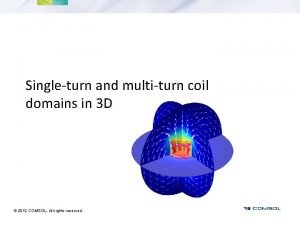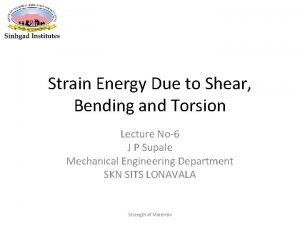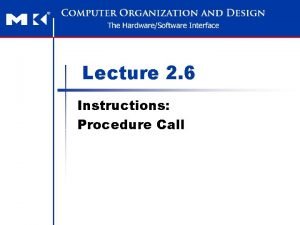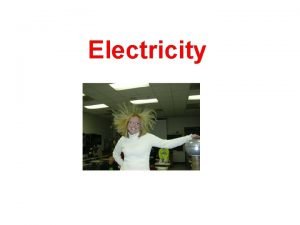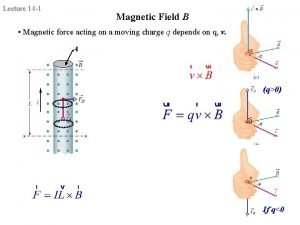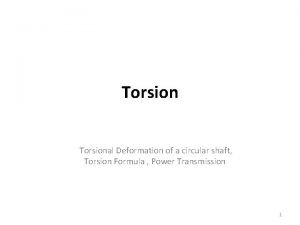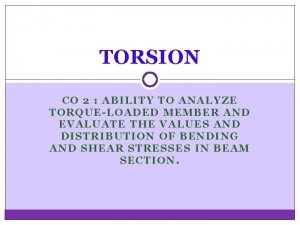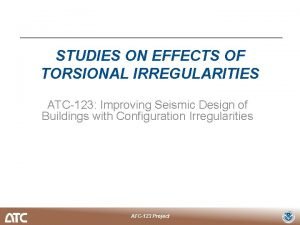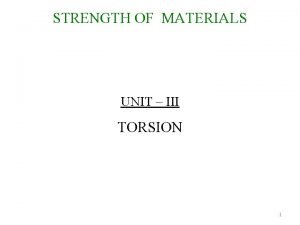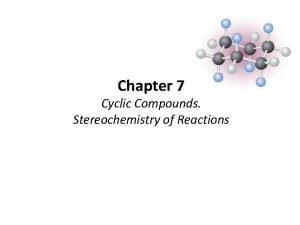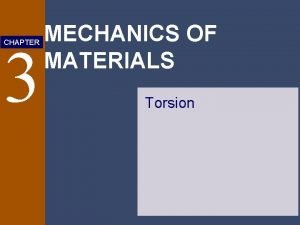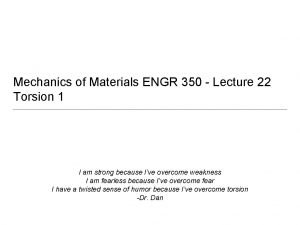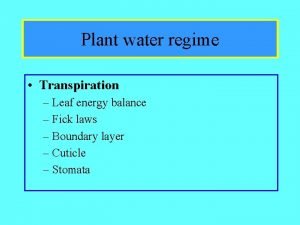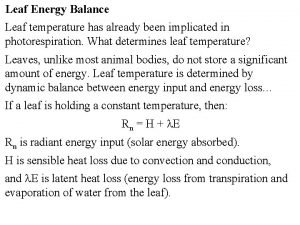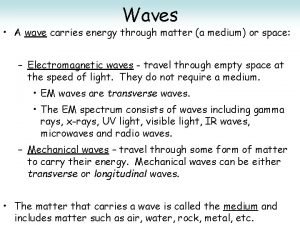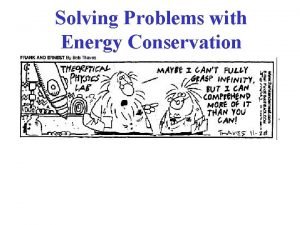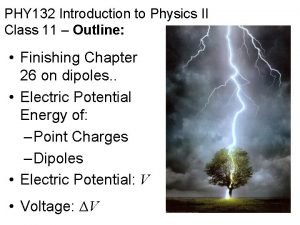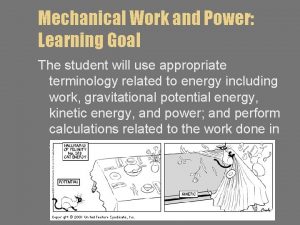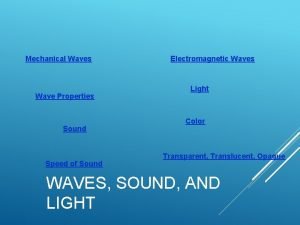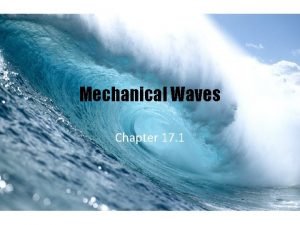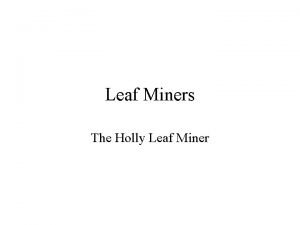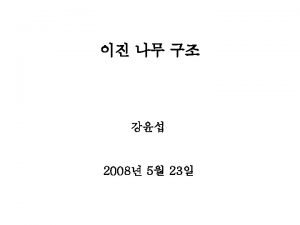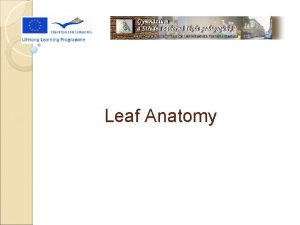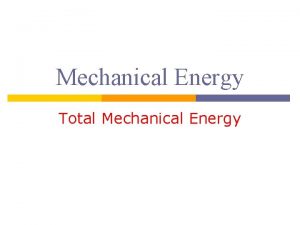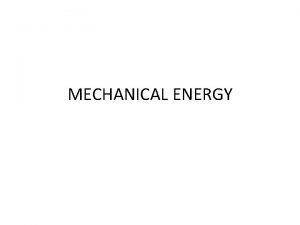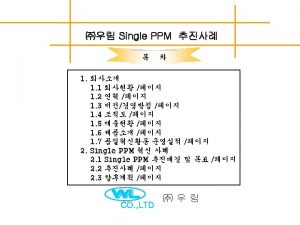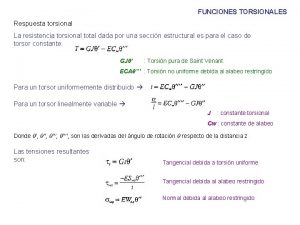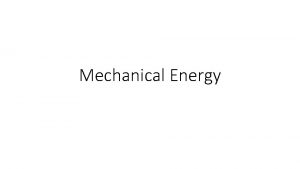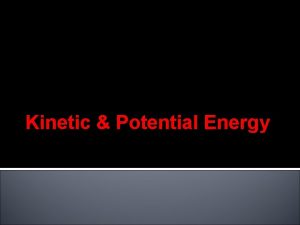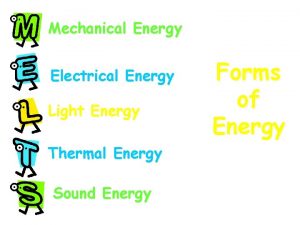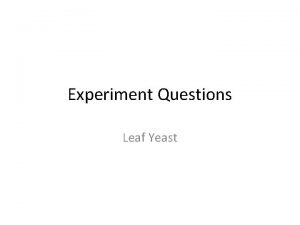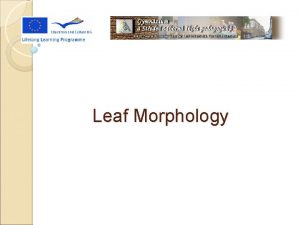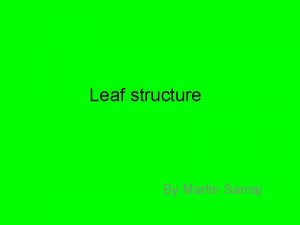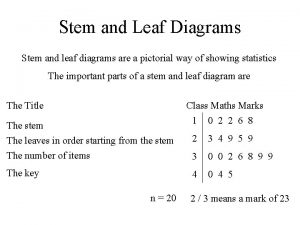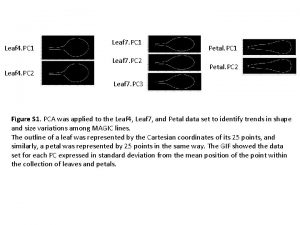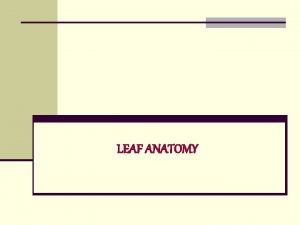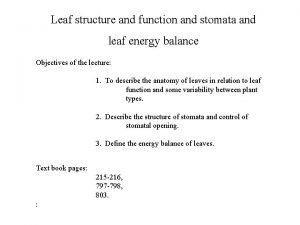Mechanical Energy Springs Coil Leaf Springs Torsional Springs






























- Slides: 30

• Mechanical Energy – Springs • • • Coil Leaf Springs Torsional Springs Linear spring Shocks etc.

• Mechanical Energy – Actuated Valves • • • Power outage Loss of compressed air Spring Return NC / NO PLC’s

• Mechanical Energy - Pressurized Fluids –Hydraulic Systems • Hydraulic systems store fluid under high pressure • Resulting potential hazards: – Injection of fluid into the skin – Burns from hot, high pressure fluid – Cuts or abrasions from flailing lines • Never check for pinhole leaks – Potential for injection of oil may result in the loss of a finger or entire arm – Like AWJ’s – Use a piece of wood or cardboard to check for leaks

• Pressurized Fluids – Compressed Air Systems • Air receiver tanks • Primary air lines • Temporary hoses – Most dangerous aspect of using compressed air hose is its connection – Requires the use of Whip-Checks

• Pressurized Fluids – Compressed Air • Air Blasters - Some very complex systems - PLC’s • Martin Thermo Safety Shield

• Pneumatic Transport – Movement of material by Compressed Air – Motivating Force • Vacuum – Density of Air is Reduced • Pressure – Density of Air is Increased – Typ Press would be 15 - 45 psi • Two Primary Modes – Lean Phase – using low pressure - 15 psi – Dense Phase – using medium pressure – 45 psi • Control System can be quite complex, optimizing the system – Detailed procedures are required

• Pneumatic Transport – Lean Phase • Handles Small Material Volume compared to High Volume of air • Operates at a relatively High Velocity – High Abrasive Wear – Elbows especially – additional maintenance • High Volume of Air must be Filtered – additional maintenance • Less complicated controls

• Pressurized Fluids - Pneumatic Transport • Dense Phase • Intermittent Series of Slugs of Material • Low Pipeline Velocity • Low Abrasive Wear • Schedule 40 Mild Steel Pipe can be Used • More complex control system

• Pressurized Fluids • Steam • Work involving a major steam system • May involve a major part of the facility • Working on a Package Boiler installation • May simply involve a small unit and supply a point source of heat • Yet each involves working with a source of Hazardous Energy – Steam • In turn the same procedures must be adhered when isolating the systems • Appropriate LO/TO procedures

• Electrical Energy – Power Distribution & Control • Basics of Process Control – UPS (Uninterruptible power supply) • Always LO/TO at power source the Motor Control Center (MCC)

• Electrical Energy – Fatality resulting from equipment contacting live wires • Link-Belt crane

• Electrical energy – Electrical power sources • Live wires • Batteries (Chemical Energy) • Capacitors – Discharge

• Electrical energy – Static Electricity • The build-up of static electricity depends on whether the rate of charge dissipation is greater than the rate of charge generation. • A very high voltage can be produced quite rapidly, leading to electrostatic discharge (ESD) sparks and shocks • Sparks can occur unexpectedly and potentially cause fire or explosion – Ignition is possible if a fuel is present and a potentially flammable atmosphere could arise • The same phenomena which create lightning and thunderstorms are around us every day, creating incredibly high voltages which cause sparks and shocks. • If there is a flammable atmosphere present, such as a solvent vapour or dust cloud, then the risk of explosion may cause concern • Refueling of Aircraft

• Electrical Fatalities 2006 • 04/03/06, 50 yr, 11 yr exp –Boom contacted energized wires • 05/19/06, 77 yr, 58 yr exp –Contacted energized conductor • 06/21/06, 75 yr, 50 yr exp –Contacted energized wires-fire • 07/27/06, 25 yr, 2 yr exp –Contacted energized guy wire

• Thermal Energy Hazards – Molten Metal - Iron, Copper, etc. • Smelter, cupola, BOF, EAF, autoclave • Do not allow water in vicinity of molten metal – Safe Work Practices • • • Specific Training Adequate ventilation, heat shielding Personal Protective Equipment Personal Monitors & Alarms Drink plenty of fluids Watch for signs of Heat Stress

• Thermal Energy Hazards – Dust Explosions - Baghouse • High Surface Area – The dust must be combustible. – The dust must be capable of becoming airborne. – The dust must have a size distribution capable of flame propagation. – The dust concentration must be within the explosible range. – An ignition source must be present. – The atmosphere must contain sufficient oxygen to support and sustain combustion. – Dust Explosions In Mines • Development of methods for arresting underground tunnel explosions

• Thermal Energy Hazards – Dust Explosions Fuel (dust) – Explosion Suppression System – Rupture Disk • Vent gases Confined Space (equipment, building) Oxygen Ignition Source

• Chemical Energy – Chemical reaction – Hazardous Waste Facility • Recent Explosion in Apex, North Carolina - 5 October, 2006 • Environmental Quality Company – Previous Blast in Romulus, Michigan – August, 2005 • Electrical Resistance Hazards – Resulting in fires

• Compressed Gases & Mixtures of Compressed – 3 major groups of compressed gases: – Liquefied gases – liquid at ambient temperature while under pressure • Propane, carbon dioxide, anhydrous ammonia, nitrous oxide, etc – Non-Liquefied gases – permanent gases at ambient temperature even at very high pressure • Oxygen, nitrogen, helium, argon – Dissolved gases – Acetylene - chemically very unstable, cylinders packed with inert, porous filler & saturated with acetone into which the acetylene gas dissolves and in turn is stable – Cylinders must be kept Secured & Capped • Compressed gas cylinders if damaged can become uncontrolled rockets

• Compressed Fuels – Liquified Gaseous Fuels (LGF) • Liquified Petroleum Gas (LPG) – Propane » Gas Cylinders • Liquified Natural Gas (LNG) – LNG Tankers – Compressed Natural Gas (CNG) • Gas Cylinders – Propane – New Composite Lite

• Magnetic Energy • Rare Earth Magnets – These Magnets are extremely powerful, and potentially dangerous. – Could cause malfunctions in cardiac pacemakers – They are brittle, and if allowed to snap together from a distance, they will break and can send sharp shrapnel flying. – Modern magnet materials are extremely strong magnetically and any person required to handle magnets should be appropriately trained about the potential dangers of handling magnets. – Magnets should be kept away from sensitive electronic equipment.

• Other Forms of Stored Energy

• In Review: – To control hazardous energy one must be able to: • Identify all energy sources including Stored Energy • Be able to evaluate hazardous conditions • Identify and establish the effectiveness of each control option – Ensure adequate training • Formal training as well as On the Job training • Combine Theory with practical Hands-On training • Objective assessments must be made to ensure that the individual has acquired an understanding and the competencies that are required

• Again • Hazard Control Involves: – Safety Engineering - Technology • Identification of Hazards • Evaluation of Hazards • Control of Hazards • – Safety Management – Administrative • Safety Program Elements • Establishment of Policies • Development of Procedures Alive & Well

• • • Home Stored Energy Hey. Tackle Dad, Dad’s I Was Thinking --and. AYou’ll Be Ready Still Packer Fan. Toeh? Tackle The Evening What Better Reason



• • • Home Stored Energy Hey. Tackle Dad, Dad’s I Was Thinking --and. AYou’ll Be Ready Still Packer Fan. Toeh? Tackle The Evening What Better Reason


 Series coil and multi-turn coil
Series coil and multi-turn coil Strain energy stored due to bending
Strain energy stored due to bending Maple leaf and oak leaf homologous
Maple leaf and oak leaf homologous Leaf and non leaf procedure
Leaf and non leaf procedure Forms of energy include
Forms of energy include How to convert mechanical energy to electrical energy
How to convert mechanical energy to electrical energy Uses of mechanical energy
Uses of mechanical energy What is electromagnet
What is electromagnet Potential energy of coil in magnetic field
Potential energy of coil in magnetic field Torsional moment of resistance
Torsional moment of resistance Torsional moment formula
Torsional moment formula Torsional
Torsional Torsional moment formula
Torsional moment formula Snap fit joint
Snap fit joint Alexander's law nystagmus
Alexander's law nystagmus Torsional strain
Torsional strain Testicular detorsion maneuver
Testicular detorsion maneuver Torsion example problems
Torsion example problems Actual mechanical advantage vs ideal mechanical advantage
Actual mechanical advantage vs ideal mechanical advantage Leaf energy balance
Leaf energy balance Leaf energy balance
Leaf energy balance Energy energy transfer and general energy analysis
Energy energy transfer and general energy analysis Energy energy transfer and general energy analysis
Energy energy transfer and general energy analysis Kinetic energy definition
Kinetic energy definition Type of wave
Type of wave How to solve mechanical energy
How to solve mechanical energy Mastering physics
Mastering physics Mechanical work definition
Mechanical work definition Example of mechanical wave
Example of mechanical wave Mechanical wave energy
Mechanical wave energy How can mechanical energy be conserved
How can mechanical energy be conserved
